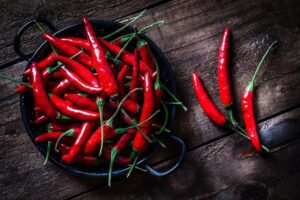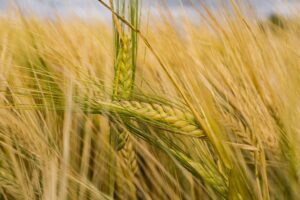Picoxystrobin 6.78% + Tricyclazole 20.33% SC
A Broad Spectrum Fungicide for Enhanced Crop Protection
Introduction
Picoxystrobin 6.78% + Tricyclazole 20.33% SC is a powerful fungicide designed to combat a wide range of fungal infections in crops, offering both preventive and curative solutions. This chemical formulation is known for its systemic activity, making it a versatile and effective choice for farmers facing challenges posed by various crop diseases. In this article, we will delve into the key features, modes of action, and benefits of Picoxystrobin 6.78% + Tricyclazole 20.33% SC.
Quick Facts
Ideal for Resistance Management
One of the standout features of Picoxystrobin 6.78% + Tricyclazole 20.33% SC is its dual mode of action, which encompasses both preventive and curative properties. This dual approach makes it an invaluable tool in resistance management. As fungal pathogens can develop resistance to single-mode fungicides over time, having a product that attacks them from multiple angles is essential for sustained crop protection.
Crops
Chili

Picoxystrobin 6.78% + Tricyclazole 20.33% SC is highly effective in protecting chili crops. Chili plants are susceptible to various fungal infections, and this fungicide is designed to combat some of the most prevalent issues:
- Anthracnose: This destructive disease causes dark, sunken lesions on chili peppers, affecting their quality and yield. Picoxystrobin and Tricyclazole work together to prevent and cure Anthracnose, ensuring healthy chili plants.
- Powdery Mildew: Powdery mildew can quickly spread through a chili crop, coating leaves and fruits with a white, powdery substance. The dual mode of action of this fungicide keeps powdery mildew at bay.
- Wet Rot: Wet rot can lead to significant post-harvest losses in chili. Picoxystrobin 6.78% + Tricyclazole 20.33% SC provides preventive and curative protection against wet rot, preserving the quality of harvested chilies.
Paddy

Paddy fields are often susceptible to fungal infections, which can devastate rice crops. Picoxystrobin 6.78% + Tricyclazole 20.33% SC is a valuable tool for paddy farmers, offering protection against:
- Leaf Blast: Leaf blast is a common rice disease that causes lesions on rice leaves, reducing photosynthesis and ultimately affecting yield. This fungicide’s preventive action helps shield rice plants from leaf blast.
- Neck Blast: Neck blast is another perilous rice disease, impacting the grain quality and yield. With its dual mode of action, this fungicide acts both preventively and curatively to combat neck blast.
Movement in Plant
Picoxystrobin 6.78% + Tricyclazole 20.33% SC boasts systemic and translaminar movement within plants. Systemic action means it can be absorbed by the plant and transported to different parts, offering protection to untreated areas. Translaminar movement ensures that it spreads across the leaf surface, forming a protective barrier against fungal infections.
Mode of Action
The fungicide’s mode of action is twofold, combining curative and preventive properties.
Curative Action
When fungal infections are already present, the curative action of Picoxystrobin and Tricyclazole works to stop the disease from spreading further. It combats existing infections, promoting plant recovery and reducing damage.
Preventive Action
Preventive action is equally crucial. By forming a protective shield on plant surfaces, this fungicide acts as a barrier, preventing fungal spores from establishing infections in the first place. This proactive approach is essential for maintaining healthy crops.
Benefits
Dual Mode of Action
The primary benefit of Picoxystrobin 6.78% + Tricyclazole 20.33% SC lies in its dual mode of action. This dual-action approach, encompassing both curative and preventive strategies, is a game-changer in crop protection. It ensures that fungal pathogens are not only treated effectively when they emerge but also kept at bay from the start.
In conclusion, Picoxystrobin 6.78% + Tricyclazole 20.33% SC stands as a formidable solution for farmers seeking to safeguard their chili and paddy crops from the ravages of fungal infections. Its broad-spectrum, systemic, and dual-mode action attributes make it an ideal choice for those looking to manage resistance effectively and maximize crop yields. By understanding its features and benefits, farmers can make informed decisions about integrating this fungicide into their agricultural practices, ultimately contributing to more sustainable and profitable crop production.

